#carlos villatoro
Explore tagged Tumblr posts
Text

María Félix-Carlos Villatoro "La mujer sin alma" 1944, de Fernando de Fuentes.
18 notes
·
View notes
Text
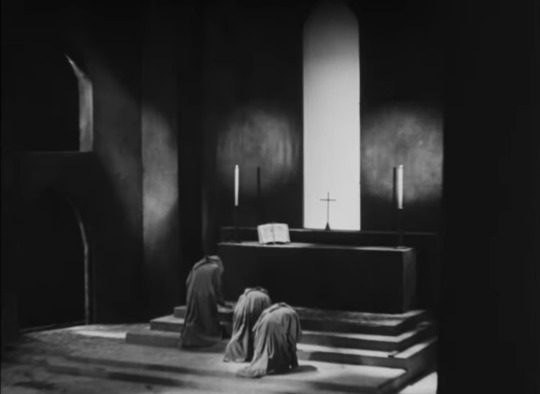



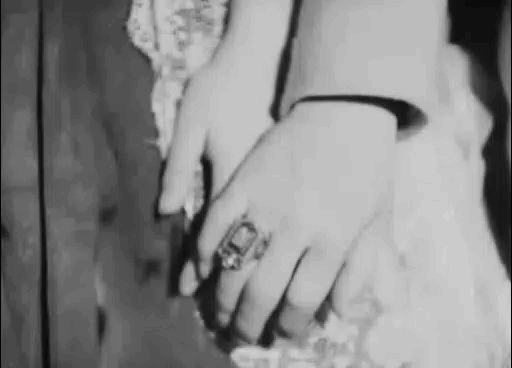


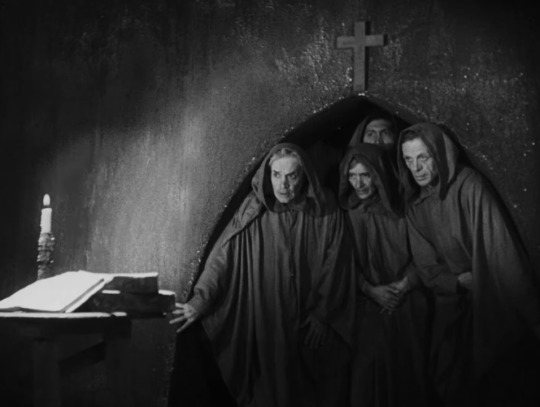
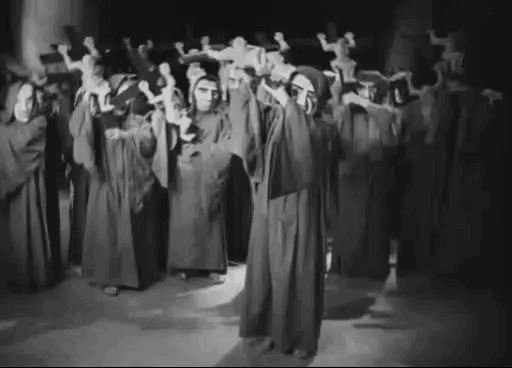
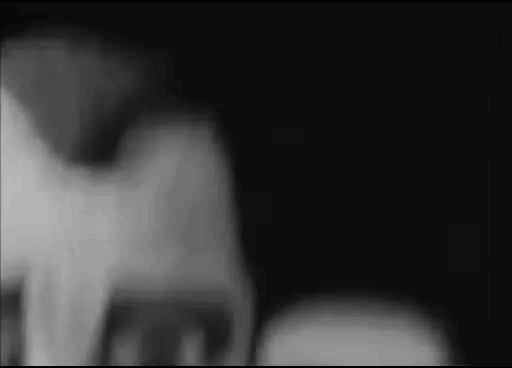
• Dos monjes (1934) Dir. Juan Bustillo Oro
4 notes
·
View notes
Text
Dread by the Decade: El fantasma del convento
👻 You can support me on Ko-Fi! ❤️

★★★½
Plot: A couple and their friend take shelter in a strange monastery after getting lost in the countryside.
Review: Strong performances, cinematography, and atmospheric scares outweigh some pacing issues and predictability.

English Title: The Phantom of the Monastery Year: 1934 Genre: Ghosts, Occult Country: Mexico Language: Spanish Runtime: 1 hour 25 minutes

Director: Fernando de Fuentes Writers: Fernando de Fuentes, Jorge Pezet, Juan Bustillo Oro Cinematographer: Ross Fisher Editor: Fernando de Fuentes Composer: Max Urban Cast: Enrique del Campo, Marta Roel, Carlos Villatoro, Paco Martínez, Victorio Blanco

------
Story: 3/5 - Though it's rather cliche with an obvious twist, the interesting characters and eeriness of the narrative make it worthwhile.
Performances: 4/5 - Roel is compelling as the selfish and almost sinister Cristina, and Martínez tells an ominous story well.
Cinematography: 3/5 - The framing and use of shadows are great, but some camera movements are unsteady/stilted.

Editing: 4/5
Music: 2.5/5 - Overly dramatic and loud at points.
Effects: 4/5
Sets: 3/5 - Mostly striking Catholic monastery sets with a good sense of scale, though the occasional room looks cheap.
Costumes, Hair, & Make-Up: 3.5/5
youtube
Trigger Warnings:
Graphic depictions of corpses/mummies
#El fantasma del convento (1934)#El fantasma del convento#The Phantom of the Monastery (1934)#The Phantom of the Monastery#Fernando de Fuentes#Mexican#ghosts#occult#Dread by the Decade#review#1930s#★★★½
5 notes
·
View notes
Link
0 notes
Audio
Your deadicated hosts travel (further) back in time to review the 1934 Mexican horror classic EL FANTASMA DEL CONVENTO, directed by Fernando de Fuentes.
Do the Google Translate subtitles hold up? How does EL FANTASMA compare to LA LLORONA from 1933? Tune in and find out!
Context setting 00:00; Synopsis 14:18; Discussion 34:02; Ranking 54:15
#podcast#horror podcast#mexican horror#horror#classic horror#film#la llorona#el fantasma del convento#fernando de fuentes#enrique del campo#marta roel#carlos villatoro#paco martinez#victorio blanco#devil#satan#halloween#producciones fesa#rayo films#mummy#aztec mummies#horror cinema around the world#monastery#monks#tepotzotlan#fantasy of the monastery#the phantom of the convent
6 notes
·
View notes
Photo

JUNIO 2, 1904
NACE EL DIRECTOR MEXICANO JUAN BUSTILLO ORO
Dos monjes Dir. Juan Bustillo Oro México 1934
#dos monjes#juan bustillo oro#víctor urruchúa#carlos villatoro#cine mexicano#cine 1930#DíasDeCine#(Oscuros)DíasDeCine#VeoCineDiario
3 notes
·
View notes
Text
The Ghost Train (1927) A Silent Film Review
The Ghost Train (1927) A Silent Film Review
There are criminal happenings on the Veracruz railroad and Adolfo Mariel is sent in to investigate. What he finds is a criminal gang led by the mysterious Ruby and the stationmaster’s inevitably beautiful daughter. This stylish action/thriller comes from Mexico. (more…)
View On WordPress
#1927#Action Adventure#Angelita Ibáñez#Carlos Villatoro#Clarita Ibáñez#El Tren Fantasma#Gabriel García Moreno#Manuel de los Ríos#Mexican Film#The Ghost Train
1 note
·
View note
Text
WIP Intro- The Rat Pack

Genre- YA contemporary
POV- first person present tense (multi POV) (includes some flashbacks)
Status- Outlining
Themes- friendships, road trip, identity, loss, adulthood, family relationships, romantic relationships...
Setting(s)- Miami, Florida & Fairbanks, Alaska
Synopsis- Hudson. Owen. Emilio. Roseline. Iris. The Rat Pack. Best friends since they were all six, their lives more than intertwine and intersect. After his mom's death, Hudson feels as if he's adrift in the ocean- no buoy in sight. The only thing keeping him from drowning are his best friends & the secret feelings he harbors for one in particular. He knows he's gonna need them now more than ever- especially after his father remarries. Owen has a great life with his moms & longtime girlfriend, but has always felt like there was a certain piece missing from his life- a giant looming uncertainty. Now, he's decided to start searching for his birth parents. Even though life-of-the-party Emilio keeps his signature cool & confident smile on his face, it's not strong enough to hide the pain he feels after the former love of his life- his ex Harry, dumps him. The artistic optimist Roseline has kissed many frogs & now believes she has found Mr. Right- by the way of a leather wearing guitar playing rocker. But what if Prince Charming was a lot closer to home? Analytical & independent, aspiring filmmaker/photographer Iris has her entire life planned out. Graduate from NYU, then win a Best Director Oscar at twenty-seven. A minor life "bump" and unexpected romance was not something she ever expected... or wanted. As a final chance to be with his friends, Hudson suggests that they all go on a road trip before they go their seperate ways for college. A story about letting go, holding on, & discovering new things, The Rat Pack delivers a heart wrenching emotional punch!
Characters
Hudson Moore (main protagonist)
Owen Parker-Mitchell (main protagonist)
Emilio Garcia (main protagonist)
Roseline Toussaint (main protagonist)
Iris Phan (main protagonist)
Harry Weitz (Emilio's ex-boyfriend)
Warren Cavanaugh (Roseline's boyfriend)
Antonio Vega (Iris' love interest)
Gracie Thomas (Owen's girlfriend)
Robert Moore (Hudson's father)
Kelly Moore (Hudson's step-mother)
Oliver Moore (Hudson's younger brother)
Samantha & Aria Villatoro (Hudson's younger step-sisters)
Penelope (Penny) Parker (Owen's adoptive mom)
Shannon Mitchell (Owen's adoptive mom)
Milagro & Ariel Garcia (Emilio's parents)
Elena Garcia-Alvarez, Eva Garcia, & Erin Garcia (Emilio's sisters)
Fabienne & Claude Toussaint (Roseline's parents)
Amelie Esposito (Roseline's older sister)
Carlos Esposito (Roseline's brother-in-law)
Gregory Toussaint (Roseline's older brother)
Lin & Huynh Phan (Iris' parents)
Selene & Joseph Gray (Owen's birth parents)
#my writing#writeblr#writeblr community#writing community#my wips#my wip intro#wip intro#wip introduction#young adult contemporary#young adult fiction
4 notes
·
View notes
Text
Subjective Truth in a Mexican Gothic Drama By Raquel Stecher

Director Juan Bustillo Oro’s surrealist drama DOS MONJES (’34) was an outlier of early Mexican cinema just as it had entered its golden age. Mexico was in a state of transition in the years after the Mexican Revolution and the Cristero War, which suppressed religion, most notably the Catholic church. According to film historian Elisa Lozano, “the national cinema was in search of its identity, wrenched in opposite directions by the popular and the modern.” Bustillo Oro’s early work, especially DOS MONJES, is indicative of this sort of transitional space as he combines traditional elements of theater with an experimental filmmaking style.
DOS MONJES stars Carlos Villatoro as Javier, a sickly and disturbed monk who attacks the newest member of the monastery, Juan (Victor Urruchua), with a crucifix. We learn that the two men have transitioned to monastery life as a way of coping with their shared tragedy. Two flashbacks, one from the perspective of Javier and the other from Juan, tell the story of friends who are torn apart by their love for the same woman Ana (Magda Haller).

The film is a psychological study in subjective memory. It’s clear that Javier and Juan have two different stories to tell, each favoring themselves and painting the other as a villain. In Javier’s story, he’s a sympathetic, if not pathetic, figure: a devoted son, adoring suitor and faithful friend whose chronic health condition threatens to shorten his life. He dresses in grey and Juan appears as a dark figure emerging from the shadows wearing all black. In Juan’s vision, he is the one wearing grey and Javier wears black.
In contrast to Javier’s portrayal of Ana as a childlike figure, Juan tells the story of a deeply passionate love affair with a woman whose sexuality has been repressed by Javier’s overbearing nature. Ana is visualized with subtle differences in appearance; most notably a white dress with black lace in Javier’s vision and a black dress with white lace in Juan’s. The differences between the two men’s stories clearly demonstrate that the human mind remembers the past through an emotional filter and that their truths are relative.
Bustillo Oro, who not only co-wrote the story but also directed and edited the film, took a leap of faith in trying something so drastically different from the norm. The flashback technique was still a relative novelty in film, and a story told through different points of view was refreshingly different. This technique would later be explored in the classic Akira Kurosawa film Rashomon (’50). DOS MONJES features incredible cinematography by Agustin Jimenez, and this was the first feature film in a long career for the talented visionary. Jimenez employed both unexpected angles and extreme shots from above or below which heightened dramatic elements and skewed points of view.

DOS MONJES was heavily inspired by German Expressionism, most notably THE CABINET OF DR. CALIGARI (’20). This is most evident in the film’s use of black-and-white imagery and its distortion of reality. While this isn’t a horror film it does have some horror elements including the backdrop of a gothic monastery, the use of light and shadow, the violent attack at the beginning of the film and its ghoulish ending.
In some ways, DOS MONJES is Bustillo Oro’s exploration of post-Mexican Revolution identity. There is a nostalgia for the past, in this case the late 19th century, that’s told through the avant-garde lens of a modern filmmaker. One could see Javier and Juan as two sides of one personality, which echoes the split in Mexican national identity. Oro went on to make numerous films that dealt with the Mexican Revolution more directly, in both dramatic and comedic ways, including LOS QUE VUELVEN (‘32), EL COMPADRE MENDOZA (‘34), EN TIEMPOS DE DON PORFIRIO (‘40) and MEXICO DE MIS RECUERDOS (‘44).
DOS MONJES was filmed at Estudios Mexico Films in June 1934 and released in November of that same year. It got a US release in January 1935 under the name Two Monks, a literal translation of the Spanish title. While DOS MONJES was well-received by critics, audiences were not as receptive to the film’s unconventional approach. It was a box-office failure and languished in obscurity until it was rediscovered in the 1970s. Decades after its initial release, DOS MONJES is now recognized as not only an underrated classic but also a singular example of experimental Mexican filmmaking.

#Mexican cinema#Golden age#Hispanic representation#Dos Monjes#Two Monks#german expressionism#Mexican history#mexican revolution#TCM#Turner Classic Movies#Raquel Stecher
117 notes
·
View notes
Text
The Ghost Train (1927)
youtube
There were very few silent films ever produced in Mexico. And after the fire in Mexico's National Film Archive, most of what was shot was destroyed. However, there are a few key examples left, one of those is , 'El tren fantasma' (1927).
It survives mostly intact, though there is a sizable chunk missing towards the climax of the film. The plot concerns Adolfo Mariel (Carlos Villatoro), as he is sent to investigate strange happenings at a railway. There he greeted by the stationmaster and his daughter, Elena (Clarita Ibáñez). Adolfo is taken by her beauty, but there is another man interested in her as well, Paco Mendoza (Manuel de los Ríos), even though he has a girlfriend, Carmela (Angelita Ibáñez). However, it turns out he is the leader of the bandits who were the reason Adolfo came to the railway. A love triangle ensues with action packed sequences that culminate to a point where it becomes a matter of life or death.
The cast does a very goo job in this film. Villatoro plays an excellent hero who you can easily root for, while Manuel de los Ríos basks in the ability to play the villain. There is a crucial portion of the film concerning him that is lost, it is a shame because after appreciating his performance to the level I did before realizing what was missing, I spent a long time wondering what his performance would have been like on that reel.
Carlita does a good job at portraying Elena as a gullible, light hearted person, but between the two sisters the better acting job is done by Angelita.
4 notes
·
View notes
Text
Celebró DIF Estatal y SESEQ XVII Aniversario del Hospital de Especialidades del Niño y la Mujer

El Sistema Estatal DIF, dirigido por Eleamor Hernández Bustos, celebró el XVII Aniversario del Hospital de Especialidades de Niño y la Mujer, en compañía del Subcoordinador General Médico de Servicios de Salud en el Estado, Dr. Luis Juan Ostos Mondragón.

Al encabezar este festejo, la Directora General del DIF Estatal destacó el trabajo continuo de los doctores, enfermeras, trabajadoras sociales, psicólogos, nutriólogos, especialistas y todo el personal que labora diariamente en este nosocomio para atender con calidad a las mujeres y niños que requieren mejorar su salud. “El área en la que están es de las más hermosas, atienden a niños, madres, ven nacimientos, han vivido tantas experiencias buenas y malas, y todos ustedes dan su esfuerzo, dedicación, trabajo y entregan diariamente el alma y corazón; los felicito y les agradezco porque a nosotros como DIF Estatal nos han apoyado mucho con niños que han llegado a este hospital, felicidades por estos 17 años y ser referentes a nivel nacional”, dijo Eleamor Hernández Bustos.

En su intervención, el ubcoordinador General Médico de Servicios de Salud en el Estado, Dr. Luis Juan Ostos Mondragón, recordó los inicios de este hospital y recalcó la evolución del mismo. “Hoy es un día de júbilo, se ha ido mejorando la infraestructura de este hospital, yo quiero felicitarlos por su compromiso, porque cuando hablo de este hospital, lo hago con mucho orgullo gracias al trabajo de todos ustedes”, subrayó Ostos Mondragón.

Por su parte, el Director General del Hospital de Especialidades del Niño y la Mujer, Dr. Manuel Alcocer Alcocer, dio la bienvenida a los asistentes y enalteció la labor que realiza todo el personal del hospital, cuyo esfuerzo, dijo, ha puesto el nombre del nosocomio como uno de las mejores unidades hospitalarias del estado y del país. “El hospital está apunto de ser mayor de edad, estamos muy contentos de celebrar un aniversario más, hoy en día se atienden más de 12 mil nacimientos al año y hemos crecido de manera impresionante”, mencionó al reconocer al Dr. Carlos Carmelo Varo Andrade quien atendió el primer parto en dicho nosocomio hace 17 años.

El Hospital de Especialidades del Niño y la Mujer inició actividades el 10 de octubre de 2002. Hoy ocupa el tercer lugar a nivel nacional en número de atenciones médicas de materno infantil en el sector salud. En el evento también estuvieron presentes: Martina Pérez Rendón, Directora de Servicios de Salud; Guadalupe Dávila Reséndiz, Subdirectora Administrativa del Hospital de Especialidades; Miguel Ángel Villatoro Padilla, Coordinador de Hospitales de la Secretaría de Salud en el Estado; Antonio Rivera de la Vega, Secretario General del Sindicato de Trabajadores de la Secretaría de Salud sección 32; así como personal activo del hospital y pacientes.
#QroOrgulloDeMx#QuerétaroOrgulloDeMx#Querétaro#Hospital#DIF#SESEQ#HospitaldeEspecialidadesdelNiñoylaMujer#Aniversario#doctores#enfermeras#psicologos#nutriologos
1 note
·
View note
Text
Homicidas que emboscaron a policías serían recibidos por pandilla en Guatemala
Las autoridades encontraron esta evidencia en uno de los teléfonos de los pandilleros capturados.

El Gabinete de Seguridad dio un duro golpe a los homicidas de los tres agentes policiales quienes planeaban huir hacia Guatemala, pero ayer fueron localizados cuando se escondían en un mesón en la colonia Carrasco de Chalchuapa, Santa Ana.

El ministro de Seguridad, Gustavo Villatoro, afirmó que los pandilleros tenían planeado irse para el país vecino donde serían recibidos por mareros.
«En el teléfono de Adolfo Mejía, alias Robiño encontramos mensajes de pandilleros de Guatemala, donde estaban coordinando que la 18 Sureños iban a recibirlos», detalló Villatoro.
Los pandilleros detenidos fueron identificados como Geovanny Chigüila Olmedo, su compañera de vida Gabriela Esmeralda Solís y Gustavo Gerardo. Mientras que, Rodolfo Alfredo Mejía, fue abatido por los elementos policiales, luego que atacara con un arma de fuego a los policías. En su teléfono fue que las autoridades encontraron la evidencia.
«Lo que buscaban estos delincuentes (responsables del homicidio de los agentes de la @PNCSV) era cobardemente huir del país», reiteró el funcionario.
Los mareros involucrados en el crimen de los policías son miembros de una estructura conocida como Huber Vatos Locos. Ayer más de 56 pandilleros de esta clica fueron detenidos.
Villatoro detalló que entre los capturados también se encuentra «el uber que los movilizó [a los homicidas] de la zona de Santa Ana hacia Chalchuapa».
Eficacia policial
Los tres agentes policiales asesinados por pandilleros el martes pasado fueron el inspector Carlos Mauricio Velásquez Rodríguez, el agente Franklin Antonio Lemus Majico y la agente Martha Lisseth Alas González.
Luego que trascendiera este crimen, el presidente de la República, Nayib Bukele, aseguró que este hecho no quedaría impune y se iba a capturar a los responsables. En menos de 48 horas, las fuerzas de seguridad ubicaron a los homicidas.
«Desde el día martes estamos trabajando en conjunto con la Fiscalía. Ya había un detenido y empezamos a tener más información, unidades de asalto, de inteligencia, investigaciones estuvieron involucradas en este trabajo para lograr la captura de los terroristas», dijo Villatoro.
Las autoridades han recalcado que los pandilleros ahora solo tienen dos caminos «van apareciendo hincados ante la justicia o van a morir a manos de nuestras fuerzas del orden».
0 notes
Text
Homicidas que emboscaron a policías serían recibidos por pandilla en Guatemala
Las autoridades encontraron esta evidencia en uno de los teléfonos de los pandilleros capturados.

El Gabinete de Seguridad dio un duro golpe a los homicidas de los tres agentes policiales quienes planeaban huir hacia Guatemala, pero ayer fueron localizados cuando se escondían en un mesón en la colonia Carrasco de Chalchuapa, Santa Ana.

El ministro de Seguridad, Gustavo Villatoro, afirmó que los pandilleros tenían planeado irse para el país vecino donde serían recibidos por mareros.
«En el teléfono de Adolfo Mejía, alias Robiño encontramos mensajes de pandilleros de Guatemala, donde estaban coordinando que la 18 Sureños iban a recibirlos», detalló Villatoro.
Los pandilleros detenidos fueron identificados como Geovanny Chigüila Olmedo, su compañera de vida Gabriela Esmeralda Solís y Gustavo Gerardo. Mientras que, Rodolfo Alfredo Mejía, fue abatido por los elementos policiales, luego que atacara con un arma de fuego a los policías. En su teléfono fue que las autoridades encontraron la evidencia.
«Lo que buscaban estos delincuentes (responsables del homicidio de los agentes de la @PNCSV) era cobardemente huir del país», reiteró el funcionario.
Los mareros involucrados en el crimen de los policías son miembros de una estructura conocida como Huber Vatos Locos. Ayer más de 56 pandilleros de esta clica fueron detenidos.
Villatoro detalló que entre los capturados también se encuentra «el uber que los movilizó [a los homicidas] de la zona de Santa Ana hacia Chalchuapa».
Eficacia policial
Los tres agentes policiales asesinados por pandilleros el martes pasado fueron el inspector Carlos Mauricio Velásquez Rodríguez, el agente Franklin Antonio Lemus Majico y la agente Martha Lisseth Alas González.
Luego que trascendiera este crimen, el presidente de la República, Nayib Bukele, aseguró que este hecho no quedaría impune y se iba a capturar a los responsables. En menos de 48 horas, las fuerzas de seguridad ubicaron a los homicidas.
«Desde el día martes estamos trabajando en conjunto con la Fiscalía. Ya había un detenido y empezamos a tener más información, unidades de asalto, de inteligencia, investigaciones estuvieron involucradas en este trabajo para lograr la captura de los terroristas», dijo Villatoro.
Las autoridades han recalcado que los pandilleros ahora solo tienen dos caminos «van apareciendo hincados ante la justicia o van a morir a manos de nuestras fuerzas del orden».
0 notes
Photo
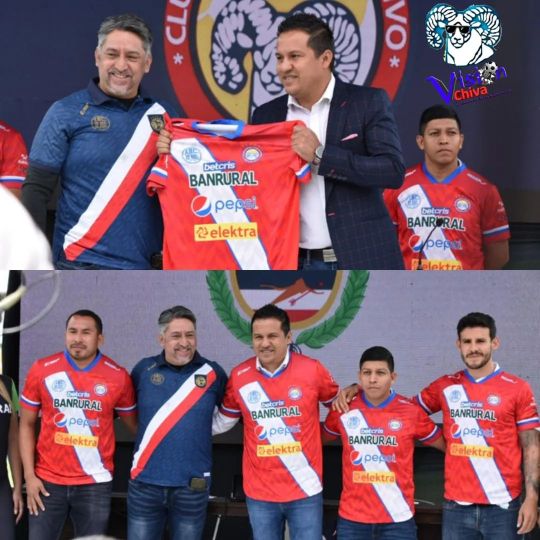
CUERPO TÉCNICO DE XELA 2022-2023 📝 ✔ Preparador de Guardametas: Heri Benjamín Pérez Cruz ✔ Preparador Físico: Carlos David Rojas Salas ✔ Asistente Técnico: Fredy Alexander Sontay Vásquez ✔ Director Técnico: Marvin Amarini Villatoro De León #VisionDeportiva #VisionChiva/ Via Oswaldo Valdez #XelajuMC #Xela #CuerpoTecnico #ligagt #Apertura2022 https://www.instagram.com/p/Cd9QzSGrGfC/?igshid=NGJjMDIxMWI=
0 notes
Text
Inicio del Partido de Concertación Nacional
ORÍGENES
Impulsado por las nuevas corrientes del conocimiento universal con una amplia tendencia a favorecer los grandes intereses sociales, surge en nuestro país la necesidad de crear un partido político que se constituyera en el impulsador y garante de las reformas sociales y económicas que necesitaba la nación en aquellos momentos. Fue así como en el año de 1961, en la Quinta Santa Teresa de los Planes de Renderos, se reúne un grupo de ciudadanos pertenecientes a las distintas clases sociales del país y acuerdan fundar una nueva identidad política denominada "PARTIDO DE CONCILIACION NACIONAL". En dicha reunión no se dio a conocer la ideología del nuevo partido ni como se integraría su Junta Directiva, pero se dejó claro que al nuevo partido político se podrían incorporar todos los ciudadanos que quisiesen
hacerlo, sin importar al partido a que pertenecieran o hubiesen pertenecido, porque el objetivo del nuevo partido era la búsqueda de una verdadera conciliación nacional.
CONSTITUCIÓN
El día 30 de septiembre de 1961, con la asistencia de más de cien personas entre profesionales, agricultores, comerciantes, empleados y obreros provenientes de las distintas zonas del país, quedó constituido el PARTIDO DE CONCILIACION NACIONAL. El acto se llevó a cabo a partir de las seis y media de la tarde, en casa del Doctor Francisco José Guerrero, situada en la Treceava Calle Poniente Número Cuarenta y Dos Cuarenta y Cuatro, Colonia Escalón de San Salvador. La Directiva provisional del Partido de Conciliación Nacional, quedó integrada así: Secretario General el Doctor José Vicente Vilanova; Secretarios Adjuntos, Doctor José Ital Iammatei y Bachiller Roberto Morán López; Secretario de Finanzas, Doctor Antonio Belismelis Álvarez, Secretario de Propaganda, Doctor Francisco José Guerrero, Secretario de Relaciones Públicas, Don Rafael Solórzano Morán. Esta Directiva elaboró los objetivos y estatutos del partido, formándose otras comisiones que colaboraron en la organización del partido.
FIRMANTES DEL ACTA DE CONSTITUCIÓN
Entre quienes firmaron el acta de Constitución del Partido de Conciliación Nacional, se encuentran las siguientes personas: Salvador Armando López, Roberto Rivas, José Alfredo Rivas, Roberto Baires, Alfredo Ramírez, José Antonio Delgado, José Valentín Jaimes, Julio C.Tejada, José Martín García, Ernesto M. Magaña, Francisco Murillo, Humberto López Melara, Julio Alberto Aguilar, René Nuila, Rafael Cabrera Martínez, Arturo Argumedo, Francisco Herrera Aquino, Enrique Cañas, Miguel Angel Molina, Joaquín Peñate, José Hernán Solórzano, Marcial Fonseca, Alfonso Membreño, Alberto Benítez, Adolfo Castillo, Enrique Sol Meza, Armando Monedero, Francisco Luis Osegueda, Ricardo Rubio Velásquez, Geo López y López, Harold Summer, Marcelo Alfaro, José Pedro Villatoro, Pablo Cruz Ventura, Ricardo Cañas, Antonio René Cortez, Jorge Mejía, Gonzalo Martínez, Víctor Cruz, José Antonio Paz, José María Salazar, Luis Alberto Alfaro, Julio César Cañas, Humberto Gonzalo López, Oscar Araujo, Pablo E. Pereira, José Antonio Argumedo, Antonio Reyes Ricas, Rafael Vides Ramos, Armando Zelada, Edwin Nuila Macay, José Antonio Soriano, Alex Hildebrand, Gabriel Montenegro, Salvador Mejía, Pedro Alfonso Segura, Jaime Chacón, Enrique Campos, Julián Paz Hidalgo, José Antonio García, Rafael Rodríguez González, Efraín Barraza, Raúl Daniel Villamariona, Carlos Armando Meza y José Antonio Ortíz.
1 note
·
View note
Text
DOS MONJES (1934, aka TWO MONKS) – Episode 119 – Decades of Horror: The Classic Era
"Hear me out and perhaps you'll understand the madness that drove me to harm him." Because, of course, self-justified madness makes it all okay. Join this episode’s Grue-Crew - Whitney Collazo, Chad Hunt, Daphne Monary-Ernsdorff, and Jeff Mohr - as they take a trip south of the border to experience Dos Monjes (1934), Mexico’s second horror film.
Decades of Horror: The Classic Era Episode 119 – Dos Monjes (1934, Two Monks)
Join the Crew on the Gruesome Magazine YouTube channel! Subscribe today! And click the alert to get notified of new content! https://youtube.com/gruesomemagazine
ANNOUNCEMENT Decades of Horror The Classic Era is partnering with THE CLASSIC SCI-FI MOVIE CHANNEL, THE CLASSIC HORROR MOVIE CHANNEL, and WICKED HORROR TV CHANNEL Which all now include video episodes of The Classic Era! Available on Roku, AppleTV, Amazon FireTV, AndroidTV, Online Website. Across All OTT platforms, as well as mobile, tablet, and desktop. https://classicscifichannel.com/
In a monastery, a monk named Javier sees the face of another monk, Juan, and suddenly attempts to bludgeon him to death with a heavy crucifix. Both men then relate their own versions of a story of their romantic rivalry for Anita, and the two versions of the story differ significantly. Both men later became monks, leading to their latest encounter. As Juan begins to recover from the blow, Javier is subjected to horrific hallucinations.
IMDb
Director: Juan Bustillo Oro
Writers: Juan Bustillo Oro, José Manuel Cordero
Cinematographer: Agustín Jiménez
Selected Cast:
Víctor Urruchúa as Juan
Carlos Villatoro as Javier
Magda Haller as Anita (Ana)
Beltrán de Heredia as PriorCarlos Villatora
Emma Roldán as Gertrudis
Dos Monjes, Mexico’s second horror film after El fantasma del convento (1934), is Whitney’s pick and the Classic Era Grue-Crew find it fascinating. Whitney is interested in the two-points-of-view retelling of the conflict fueled by a love triangle. She loves the gothic atmosphere and discovers the horror of the film in the moralities of the characters. Daphne loves the expressionistic beauty of the film and is impressed with the acting. After seeing Dos Monjes, she plans to check out El misterio del rostro pálido (1935, Mystery of the Ghastly Face), another horror film written and directed by Juan Bustillo Oro. It is a very cool, beautifully shot movie in Chad’s opinion and he really likes the two-points-of-view kind of storytelling. To him, Dos Monjes looks just like a Universal horror film with its gothic feel and air of mystery and creepiness. He also finds a stylistic connection to Batman (TV series, 1966-1968). It’s the kind of movie Jeff likes to watch more than once in order to wallow in the expressionism and take in the brilliance of Agustín Jiménez’s cinematography. He also found the opposing, subjective points of view used in Dos Monjes to be fascinating.
If the Grue-Crew’s discussion piques your interest (and it should), Dos Monjes is available to stream from The Criterion Channel and YouTube, and is available on physical media as Blu-ray from Criterion in the collection Martin Scorsese’s World Cinema Project No. 3, which includes: Pixote (1980, Brazil); Lucía (1968, Brazil); After the Curfew (1954, Indonesia); Downpour (1972, Iran), Soleil Ô (1970, Mauritania), and Dos monjes (1934, Mexico).
Gruesome Magazine’s Decades of Horror: The Classic Era records a new episode every two weeks. Up next in their very flexible schedule is one chosen by Chad: Donovan’s Brain (1953) a science fiction/horror B-movie classic!
Please let them know how they’re doing! They want to hear from you – the coolest, grooviest fans: leave them a message or leave a comment on the site or email the Decades of Horror: The Classic Era podcast hosts at [email protected]
To each of you from each of us, “Thank you so much for listening!”
Check out this episode!
0 notes